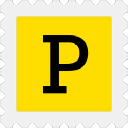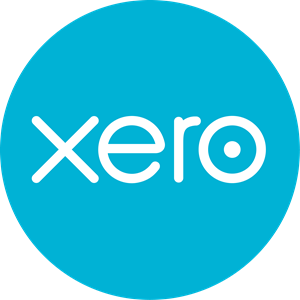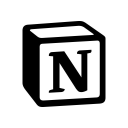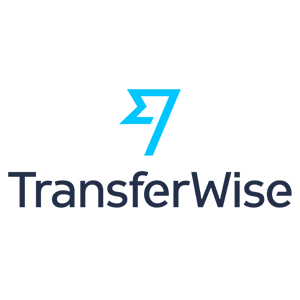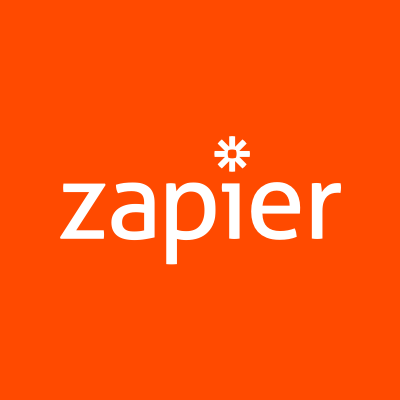How We Developed A $40K/Month Email Parser Application
Hello! Who are you and what business did you start?
Hi there! My name is Sylvestre Dupont and I’m the co-founder of Parseur, a data extraction tool. My official title is CEO, while my co-founder Sylvain is the CTO. We're only a 3-person company, so those titles might be a little over the top though. I’m currently based in the lovely island of Mauritius, in the Indian Ocean, and Sylvain is located in Grenoble, the capital of the French Alps.
Parseur is a subscription-based service (aka SaaS) to automate data extraction from emails and documents such as PDFs. Parseur has been in business for about four years now.
Our customers come from many industries but all have one thing in common: they receive too many emails and documents with the vital information they need for their day-to-day business. They can’t keep up by copying & pasting the text manually and turn to Parseur to automate their data entry process. Having data entry automated, businesses can improve their speed and reliability, reduce their costs and focus their efforts on higher value-added tasks.
Maybe that last bit sounds too meta. Let’s take a real-life example.
Some of our customers are delivery companies that work with restaurants to deliver food ordered on platforms like Doordash in the US. When somebody orders on Doordash, Doordash sends an email to the restaurant with the details of the order in an attached PDF. The restaurant then has to forward that email to the delivery company so that it can dispatch a driver to collect and deliver the food.
Without Parseur, the delivery company needs one or more people constantly monitoring their mailbox, and input the information about a new delivery in their own systems as soon as it arrives. Monitoring a mailbox all day to copy and paste data is admittedly not a dream job. On top of that, food delivery is highly time-sensitive. Most orders will come all at once in the evenings and weekends while the rest of the time will be rather quiet. As a delivery company, that means your staff will have to work very hard and under pressure for a couple of hours per day, which can lead to information being incorrectly entered, while the rest of the time they’ll sit idle. Not the best allocation of resources.
Using Parseur, all of this goes away. Parseur will be able to read the emails and the PDFs of each order, automatically extract the data in real-time as soon as it arrives and send it to the delivery management software of the company.
Parseur is a well-behaved robot, it won’t complain if it receives hundreds of emails per minute, nor will it get bored if there is nothing to do. Using Parseur, the delivery company can focus on their core business: make sure drivers are allocated to the right order, ensuring delivery operations run smoothly and make customers happy with their custom 7-cheese pizza with extra pineapple on top.
Food delivery is just one of the industries that Parseur helps. Parseur is also used by real estate agencies, e-commerce companies, marketing agencies, travel-related companies, recruitment and staffing agencies, and more.
Launched in 2017, Parseur’s revenue has grown to over $40k per month. We’re 100 percent bootstrapped, with no outside investment.
What's your backstory and how did you come up with the idea?
For most of my career before Parseur, I worked in consulting. There, I helped companies transform their businesses. On many occasions, I saw firsthand how innovation, technology, and automation can help make a business more competitive.
Start marketing and find users willing to pay in parallel to development or before building. Even better, build something with potential customers involved so that you can get immediate feedback and iterate quickly.
In 2013, I took a sabbatical break year to travel around the world. A memorable experience! But after months on the road, I was hit with a case of travel fatigue. At the same time, an itch started to want to be scratched. I was an IT engineer by training but I hadn’t written any code since graduating. My work in consulting was mostly about looking at Excel files and talking to people.
During the sabbatical, the itch of creating something (anything) grew. One day in Panama City, I decided to spend the rest of the week building a website. As I happen to have a thing for maps and travels, I went to make a site that lets you create your travel map. I started what went into many iterations and rewrites and is now globetrotte.rs (a half-finished project I don’t have much time to maintain nowadays, sadly).
Fast forward to 2015: I’ve moved out of Paris and left the consulting company I had been working for for the past 10 years. I decided to try and start my own business, exciting times! However, after a few months working on globettrote.rs, I realize that there is little chance I’ll ever be able to monetize it and live off it.
Luckily, while building the app, an idea comes to mind: it is very tedious to manually enter every trip to create your map. It would be awesome if I could just send my travel confirmation emails and have the app extract the relevant places and dates for me automatically. The idea of building an email parsing tool was born.
At the time, Sylvain, a very good friend of mine and python expert (the programming language, not the reptile) was also talking about starting a business. We decide to partner up and see where it would lead us.

Take us through the process of designing, prototyping, and manufacturing your first product.
In late 2015, Sylvain and I met up in Bucharest to spend a week working on the idea and assessing its potential. Parseur is now a remote-working company but meeting up now and then in various places around the world for a “workation” (work+vacation) would become something of a tradition, almost a “core value”. Until Covid struck, that is.
The first thing we did after getting the initial idea was market research. I have a thing for making spreadsheets too. So, off making spreadsheets I went! We surveyed the current landscape: competition, features, pricing strategy. That gave us some insights into what was working well. We investigated levers and innovative approaches we might use to get a foot in the door of the document data extraction business.
Although we had a better idea of what our product and offering could look like, we still wanted to validate our assumptions before starting building. At that point, we were not convinced that our idea could be viable and worth spending time on.
So we set a landing page boasting the features of a product that was yet to be built. We called it Captain Parser! We tried very hard and that was the best name we could come up with. When you’d click on the Sign-Up button, we would display a message explaining the platform was still being developed and offered the visitor to leave their email address to be the first to know once we were ready for launch.
We created a Google Ads campaign to attract users searching for specific keywords around email parsing, pdf parsing, data extraction and let it run for a bit. After about 2 days and $200 spent, we got hundreds of visits and about 50 email addresses. We called the experiment conclusive and decided to move forward with the building part.
We designed some mockups picturing how our application will look like. Like this beautiful signup page:

As it turns out, the name Captain Parser and the perspective of a pirate-themed application wasn’t really aligned with a B2B subscription-based software. Who would have thought?
While working on the MVP and after senses came back to us, we ditched the pirates, ditched the Captain name, and rebranded ourselves into Parseur (the French name for parser) with a more professional look and feel.

At that time, we were working part-time on the initial release of Parseur and we decided to only focus on emails to start with.
Our initial plan was to launch within 3 months. It took almost a year! We severely underestimated the complexity of making an app where you could just point & click the data you wanted to extract in a sample document and let Parseur figure out how to locate and extract those data points in every similar email. It took us many iterations, brainstorming sessions, and several complete rewrites to get it right.
We also underestimated the time required to accept payments. Things are easier nowadays, thankfully, but in 2016 you had to get your hands dirty and build out a payment form by yourself to integrate with Stripe. We also had to spend time handling VAT computation which is a tricky business in Europe (we used the help of Octobat for that). Looking back, we should have launched without payment processing, and built it after we had at least one interested customer.
By mid-December 2016, we finally had an MVP. We kept things under wrap for a few weeks, asking friends and family to test it out. And early 2017, it was time to launch.
Describe the process of launching the business.
The least I can say is that our launch was underwhelming.
We posted about our site on HackerNews and ProductHunt: both posts were a big flop, with no traction whatsoever.
We emailed the 50-or-so visitors from Captain Parser that had left their emails: 20% of email addresses bounced and almost no one signed up to our free plan. I guess waiting for a year after leaving their address, they had found another solution or moved on.
We posted on our Twitter account, but we barely had any followers, so nothing happened there either.
Then it hit us. We realized the reason nothing was working was that those avenues were not the places our target users were hanging out on. We also realized that we didn’t know where our target users were hanging out. As a matter of fact, we actually weren’t really sure of who our target users were. The things you learn when you launch a business for the first time...
So we went in search of our prized target users. We found some on Quora and answered questions related to email parsing and data extraction. And that worked! We started to get visits and signups from Quora.
In parallel, we published articles about email parsing and some use cases about how Parseur can help. After some time, articles started to appear on search engines and we got to traffic and sign-ups from them.
Finally, we built an integration with Zapier, a tool that connects applications and allows them to exchange data with each other. Parseur’s raison d'être is to automate business workflows. Using Parseur alone in a vacuum is a bit useless and Parseur really shines when integrated with other apps so that data is extracted and sent in real-time. Zapier was a must-have for us. After some time, Zapier started to send us some highly qualified traffic.
In April 2017, three full months after our public launch, we got our first paying user. By that time we had slashed our prices (we were testing price sensitivity), so our customer subscribed to our 9 euros/month plan. They say you’ll always remember when you make your first dollar. Interestingly, it works with euros too. That day was memorable, we celebrated the accomplishment and drank our revenue in beers a few times over.
Don’t get lost in the endless list of feature requests and edge bug fixes that will surely rain down. Prioritize actions with the most impact on growth, revenue, and lessening support.
And from there, Parseur started to take off and revenue started to grow.
Since launch, what has worked to attract and retain customers?
Nowadays, we attract most new customers organically via SEO from the content we published over time. Google is by far the main referrer but we also start to see some traffic from other search engines like Bing and DuckDuckGo.
Parseur has wide-ranging use cases as it is not tied to a specific industry. We talk a lot with our customers to understand how they use Parseur and why. We make sure to publish articles about common use cases, like for example the food delivery automation example I mentioned in the beginning. We also try to understand applications our customers use together with Parseur and have them listed on our integration page.
As both Sylvain and I are founders with a technical background, it is not always easy to find the motivation to publish new content and write SEO-friendly articles. There is always that new shiny feature to build calling us. Since last year, we've been working with Neha, a freelance marketing consultant, to help us build and deliver our marketing strategy. It’s great to work with somebody dedicated to growing Parseur’s content, brand, and presence, somebody that actually enjoys writing content!
Other channels we get users from include:
- Our affiliate program: we give back 20% of the lifetime revenue generated by users referred to Parseur. If you know users in a business vertical in need of data extraction and document automation, jump in!
- Backlinks from applications we integrate with, like Zapier, Integromat or Getswift
- Integration partners: we work with a few consulting companies specializing in automating business processes. They have Parseur as part of their toolbelt and regularly send us new customers.
- Social networks: over the last year, we have increased our (initially non-existent) presence on Twitter and LinkedIn. To be honest, we’re yet to see much traction as this is not the place where our day-to-day customers spend their time.
We tried Google Ads a couple of times but never got great results. We may be doing it wrong. However, some of our affiliates attract new users via Ads (that they pay for). The deal is that they can place an ad and bid on any keyword where we don’t rank well enough organically.
We also tried placing ads and backlinks on comparison websites like Capterra or G2. Didn’t work for us, we wasted money.
We got better at internationalization over time. When we first launched Parseur, our prices were in Euros only since our company was incorporated in Europe at the time. We thought it would make our accounting easier. That was a very stupid idea, don’t do that at home. Since we serve a global market, US Dollar prices are very much the standard and the expectation for most customers. Today, we are pricing in US dollars, Euros, British pound, and Australian dollars dynamically depending on where the user comes from (using Priceur). We also have our homepage and key pages translated into French and Spanish.
To retain customers, we decided to focus on delivering outstanding customer support, and it worked. Despite the possible time zone differences, our customers love to be able to directly chat with the founders as we’re usually able to answer even the most technical and complex questions straight away. Support is taking a sizable chunk of our time though and we recognize we might not be able to keep doing it all by ourselves forever. For now, it is still bearable and we focus on growing our documentation so that the majority of the questions can be answered quickly by providing a link to the relevant support article. After all, we’re an automation company, we should make sure that we do everything we can to let the machines do most of the work, including customer support.
How are you doing today and what does the future look like?
A couple of months after our heroic first paying customer we were profitable, revenue was covering business expenses. 2017 was still touch-and-go at times but by the end of that year, we started drawing a small remuneration from Parseur.
Today, Parseur boasts a few hundred paying customers. Users range from individuals on the free plan parsing a few Google Alerts emails a month to small and medium-sized companies that get a constant flow of documents to process, and can’t do it without an automation platform. We also have a few large Enterprise customers, parsing a heavy volume of documents each month.
Our growth has been quite steady over the years, with revenue growing double to triple digits % year on year. That being said, Parseur is not aiming for hockey-stick growth like some venture-backed companies. We are here for the long run and rather want to be a calm, profitable, and resilient company.
As for what comes next, I am very excited about the future of Parseur. We have started working on what will likely be our biggest feature upgrade since launch. We hope it will expand the scope of Parseur use cases to make our platform the default go-to solution to automate document data extraction.
Through starting the business, have you learned anything particularly helpful or advantageous?
When you launch a new business, there can be a fine line between knowing whether you should fail fast or keep showing up consistently every morning until things start to work. Our first 12 months after launch was tough: we had invested almost a year in development and Parseur was generating too little to be able to sustain a living, let alone two. During that time, we had to rely on savings, significant others, and side gigs to make ends meet. But we kept at it and the “showing up every morning” option was ultimately the right choice for us.
One Chinese proverb says: “The best time to plant a tree was 20 years ago. The second best time is now”. This applies to many things in life, including starting a business.
I think there are a few things you can do to hedge your bets and increase your chances of success:
- Get your minimum viable product out of the door as fast as possible to get user feedback
- Start marketing and find users willing to pay in parallel to development or before building. Even better, build something with potential customers involved so that you can get immediate feedback and iterate quickly
- Once launched, talk to your users as much as possible. Having a chatbox since day 1 provided invaluable feedback for us
- Aim to go over and beyond expectations. I remember some customers requesting some features and us being able to roll them out mere hours later. You gain serious credits from this
Once you start gaining traction, the list of “things you should do” will likely get smaller than your list of “things you should not do”:
- Don’t get lost in the endless list of feature requests and edge bug fixes that will surely rain down. Prioritize actions with the most impact on growth, revenue, and lessening support
Don’t be afraid to say “No” to feature requests that don’t align with your long-term strategy
Don’t even be afraid to mention a competitor if you think a user would be better served with them than you. For example now and then, we get asked if Parseur could be used as a desktop application or on-premises. That’s not something we’re willing to invest in, so we recommend they try out Email Parser
What platform/tools do you use for your business?
We use Intercom since day one for our chatbox and CRM and wouldn’t be where we are now without it. As you grow, the price can be a bit stiff, but it has been worth the investment for us.
Recently, we converted our sparse list of Google Docs, Spreadsheets, and random notes in emails to Notion. We use Notion to store everything from internal process documentation to meeting notes, marketing plan, and leave calendar. It’s nice to have everything centralized and easy to access, even on the go.
For our day-to-day communications, we use Telegram, rather than Slack. In Telegram, we have dedicated group conversations, including one with bots that ping us when there are issues with our site or app (thanks to Hyperping).
We use Zoom for meetings. We avoid meetings as much as possible in favor of async communications as we believe it is a more efficient use of our time as a small company. We apply the same rule for support to our users by the way and tend to refuse most online meetings in favor of chat and email. It “forces” users to formalize their questions, and sometimes even being able to find out the answer themselves or with the help of Intercom suggestion-bot. It also allows us to give better support to users in different time zones. Some users use Loom to send us their questions and screen shares. Quite a neat app!
What have been the most influential books, podcasts, or other resources?
The Epic Guide to Bootstrapping by Clifford Oravec was released while we were neck-deep in the code building the initial version of Parseur and developing hypothetical features that yet-to-exist users might need one day, maybe. It was a serious kick in the bottom. This guide does a great job at debunking the mythical “If you build it, they will come” mantra that many IT developers default to (us included) and stresses the importance of finding customers first or foremost.
I deeply enjoy episodes from other bootstrapped founders from the Bootstrapped.fm podcasts by Steve McLeod. Their forums are a nice place to discuss starting and growing a bootstrapped business as well.
Finally, departing from business-focused recommendations, I’d encourage anybody to go read anything published by Sylvain Tesson (many of his books are translated into English).
Advice for other entrepreneurs who want to get started or are just starting?
One Chinese proverb says: “The best time to plant a tree was 20 years ago. The second best time is now”. This applies to many things in life, including starting a business.
If you want to start a business, go and do it now, period. Stop procrastinating, close this tab (as well as all others), and off you go. Avoid being wantrepreneur daydreaming of the life that could be. Go out and make that life yours. It may succeed or it may fail, there is only one way to know! But whatever happens, it will be worth it.
And whatever the reason may be why you want to become an entrepreneur, remember that running a business is a marathon, not a sprint. You’ll likely end up out of your comfort zone more than once with many things to learn and do in a short time. Burnout can happen and will be bad for you and your business. So, know yourself, and find a sustainable pace allowing you to keep your business strong and steady in the long run.
Are you looking to hire for certain positions right now?
Not at the moment, but if you think you can help Parseur in a big way, shoot us an email at: jobs@parseur.com.
Where can we go to learn more?

Download the report and join our email newsletter packed with business ideas and money-making opportunities, backed by real-life case studies.

Download the report and join our email newsletter packed with business ideas and money-making opportunities, backed by real-life case studies.

Download the report and join our email newsletter packed with business ideas and money-making opportunities, backed by real-life case studies.

Download the report and join our email newsletter packed with business ideas and money-making opportunities, backed by real-life case studies.

Download the report and join our email newsletter packed with business ideas and money-making opportunities, backed by real-life case studies.

Download the report and join our email newsletter packed with business ideas and money-making opportunities, backed by real-life case studies.

Download the report and join our email newsletter packed with business ideas and money-making opportunities, backed by real-life case studies.

Download the report and join our email newsletter packed with business ideas and money-making opportunities, backed by real-life case studies.





